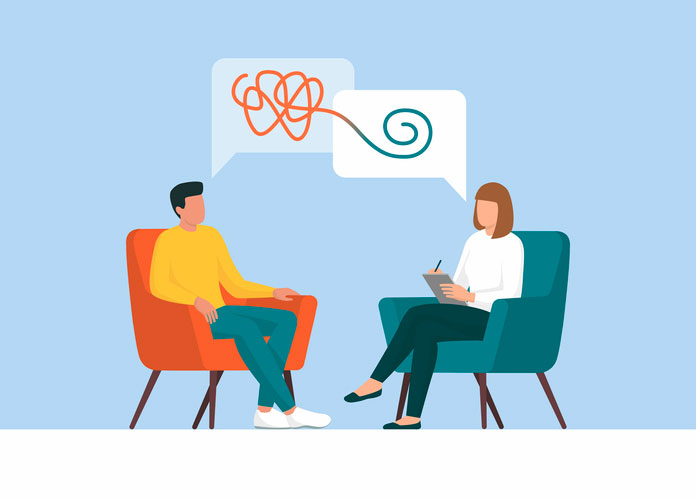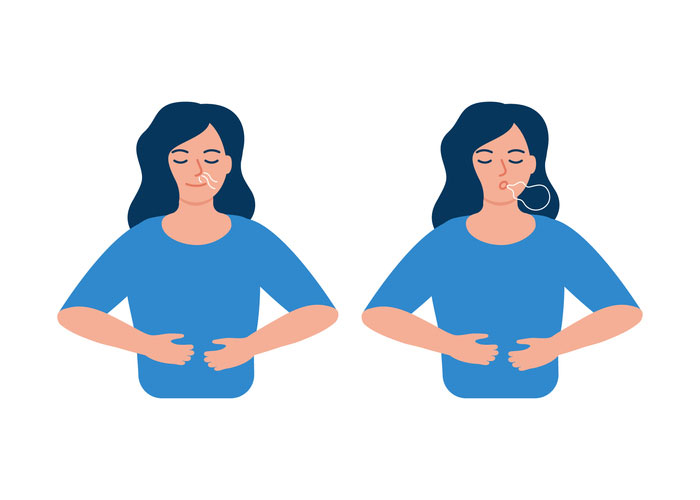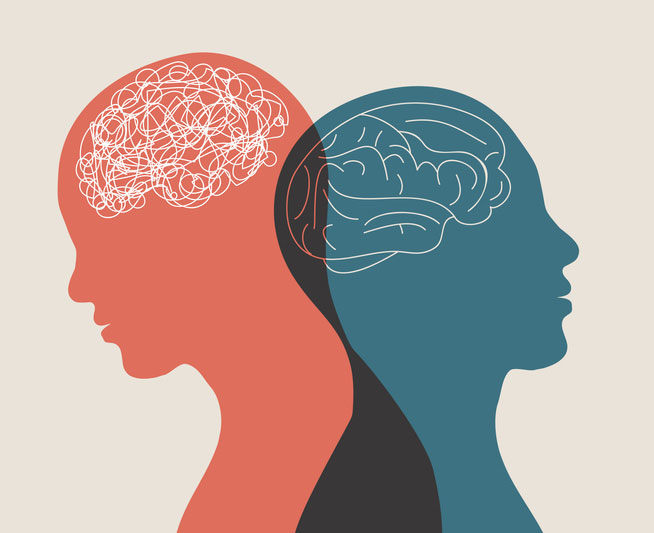5 Crucial Cognitive Behavioral Therapy Techniques ABA Professionals Use To Change Lives
The human brain is miraculously malleable. It can continuously learn and adapt to any number of scenarios. Unfortunately though, that flexibility means negative thinking patterns can take root just as quickly as positive ones. When traumatic events, mental illness, addiction, and otherwise difficult life circumstances alter one’s thought processes, every experience can look like a nightmare waiting to happen.
In those cases, cognitive behavioral therapy (CBT) can be a powerful tool. In this solution-oriented version of talk therapy, professionals help clients replace learned negative thought processes with more productive ones. However, CBT professionals don’t typically just tell their clients how to solve their issues. They help them develop their own solutions.
This process may be a little different from person to person, but well-trained therapists have a wide range of cognitive behavioral therapy techniques at their disposal. Here are five common CBT techniques professionals in almost every subfield of applied behavioral analysis use to help clients navigate the complex worlds of their own psyches.
Technique 1: Cognitive Journaling
Technique 2: Guided Discovery
Technique 3: Cognitive Restructuring
Technique 4: Mindfulness and Physical Relaxation
Technique 5: Exposure
Technique 1: Cognitive Journaling
To address counterproductive thoughts, the first step is often recording one’s fears in a cognitive journal. Initially, patients may record when triggering thoughts or situations occur and list their automatic responses and thought patterns. Later in treatment, a therapist may encourage patients to record how successful different coping techniques have been since their last visit.
Cognitive journaling is one of the most basic cognitive behavioral therapy techniques so a wide range of people can benefit from it. Along with being informative, a 2018 study published in the Journal of Medical Internet Research suggests that emotionally-focused journaling is “associated with less depressive symptoms and anxiety after 1 month and greater resilience after the first and second month, relative to usual care.”
Consider the case of someone with a severe panic disorder. This person has frequent panic attacks but the attacks occur at seemingly random times. By journaling, this person can identify common triggers and work with a therapist on how to overcome them. In the future, looking at a record of how coping mechanisms have helped in the past could be a powerful grounding technique.
Understanding the brain’s automatic responses to triggering events is central to the success of cognitive behavioral therapy.
Technique 2: Guided Discovery
Guided discovery is an active process that relies heavily on the patient’s participation. By asking open-ended questions, a therapist encourages patients to think about their own thought processes and how they impact their daily lives. When people are aware of how their brains actually work, they can be empowered to make positive mental changes.
 This kind of dialogue is frequently helpful in CBT for trauma, PTSD, phobias, and other mental health issues that arise from past events. However, like journaling, it can be used to treat a wide variety of disorders.
This kind of dialogue is frequently helpful in CBT for trauma, PTSD, phobias, and other mental health issues that arise from past events. However, like journaling, it can be used to treat a wide variety of disorders.
For instance, people who have been critically ill frequently develop PTSD and severe anxiety disorders about getting sick again or visiting the doctor. In a paper published in the Cambridge University Press, researchers describe how guided discovery along with medical advice can help patients determine that their odds of being so sick again are often less likely than they imagine.
This can help patients lessen compulsive symptom checking and prevent them from taking unnecessary precautions that interrupt their lives. Through guided discovery, they can see that these behaviors are rooted in fear instead of reality.
Technique 3: Cognitive Restructuring
Negative thought processes often become so entrenched in people’s brains that they become habits. To replace these knee-jerk responses with healthier ones, CBT therapists guide patients through a systemic and deliberate mental retraining process known as cognitive restructuring or reframing.
Though the process may look different for each individual, the American Psychology Association gives a five-step framework for approaching cognitive restructuring:
- Identify the upsetting situation.
- Identify the strongest feelings that the situation brings about (fear, sadness, anger, etc.).
- Ask questions about the thoughts behind those feelings. For instance, if someone feels anxious, they may want to ask themselves what kind of danger they expect.
- Evaluate and break down those thoughts. Is there real evidence to support negative thoughts? Is there another way to think about the situation?
- Make an objective decision about whether the thought is accurate. If it’s not, can the negative thought be replaced by a new positive one? If the negative thought is accurate, what’s the best course of action to take?
Ultimately, the goal is for patients to be able to do this themselves in their daily lives. But like physical training, cognitive restructuring takes practice and guidance. This is especially true for people whose negative thought processes have become parts of their identity.
For example, a person suffering from an eating disorder may binge, restrict, and purge based on feelings of shame and self-loathing. Learning to eat based on physical hunger or fullness alone could mean rewiring their brain to bypass those negative feelings altogether — a difficult process that, like other CBT techniques, may require a lot of reflection and open dialogue with a mental health professional.
Technique 4: Mindfulness and Physical Relaxation
Negative thinking can be both a physiological and psychological struggle. During episodes of panic or anxiety, the mind signals the body that it’s time to fight or flee — digestion slows down, extremities become numb, the heart races, and breathing becomes labored. To combat this whirlpool of physical stress and mental anguish, therapists often help patients build a toolkit of mindfulness and relaxation strategies.

Some of the most common mindfulness and relaxation strategies promoted in CBT include:
- Breathing exercises. Focusing on one’s breathing can distract the mind from negative thoughts and relax the central nervous system.
- In CBT for anger management, counting to a certain number allows people to think before they act and let feelings of rage subside.
- Progressive muscle relaxation (PMR). In a five to 10-second timeframe, a person tenses and relaxes specific muscle groups (arms, legs, facial muscles, etc.). This way, a person can focus on signals their brain is sending to their body, acknowledge them, and release nervous energy productively.
- Autogenic relaxation. This is a form of relaxation that comes from within. A person can visualize a serene image or repeat calming, self-affirming phrases. Many times, autogenic relaxation is used in conjunction with breathing exercises or PMR.
- Hobby-based relaxation. Sometimes, stress can be dealt with proactively. By meditating, doing yoga, painting, or listening to music, a person can find a moment of peace that stays with them throughout the day.
Though these strategies are often helpful for people with stress-related issues, they can also be effective cognitive behavioral therapy techniques for addiction. An analysis of 37 addiction treatment studies found that people who received mindfulness-based addiction treatment frequently report less cravings than people in other kinds of programs.
Technique 5: Exposure
In popular media, exposure therapy is often depicted as harsh, abrupt, and more than a little cruel. But when handled by a professional in a clinical setting, it can be a very safe and measured process that helps people overcome fear, PTSD, and phobias.
For instance, putting someone with a fear of heights on the edge of a cliff isn’t the way a therapist would typically start exposure therapy. Instead, they might start by breaking down a person’s thought processes surrounding heights.
Then, they might move on to imaginal therapy by encouraging the patient to imagine standing on top of a building. Or, in a uniquely modern approach, the patient could put on a virtual reality headset so they can gain exposure without being trapped in a traumatic situation. Physically facing one’s fear, a process known as in vivo exposure, can be effective, but it should be approached with caution, care, and consent.
Typically, the main goals of exposure therapy are unlearning negative thought processes, lessening stress-induced reactions, and teaching patients that they can manage their own fears with various coping mechanisms. Because of that, exposure therapy can also be effective in helping people with obsessive-compulsive disorder (OCD) overcome their fear of not completing certain rituals or repetitive tasks.
Explore Online Graduate Programs That Teach These CBT Techniques and More
Dissolving fear and guilt with compassion and understanding is at the heart of cognitive behavioral therapy. It may take a while for a person’s pain to fade into the background, but with the right CBT techniques in their arsenal, applied behavioral analysis (ABA) professionals can be instrumental parts of the process.
To find out how a graduate program could help you on your journey to becoming a therapist, social worker, classroom aide, or counselor, explore some of the top online ABA graduate programs available today. Through the right program, you could match your passion for helping others with a person-centered, scientifically-sound education in applied psychology.






